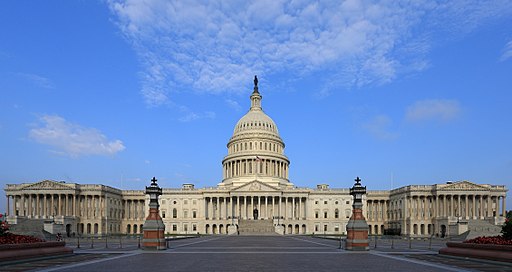Puyallup School District Civics OER w/ Washington State History

US Capitol
Materials/Resources:
- Lessons from iCivics: The Sovereign State, Why Government, Who Rules?, Government and the Economy
- Reading from American Government, e-book by ushistory.org: Chapter 1,The Nature of Government
- YouTube Videos: Distribution of Power and Parliamentry vs. Presidential Explained
- US Citizenship Test, from U.S. Citizenship and Immigration Services
- State Creation Poster/Project: This was designed to be a review activity for students. They may work in small groups or individually to create their own state and review terms/ideas in the process.
- Unit 1 Civics Packet: includes student hand-outs for all materials in the unit; individual copies of student handouts can be found in the appropriate sections below.
Original Materials:
- Unit Coverpage
- Notes guides for lessons
- Unit crossword
- Unit vocabulary
Each lesson will include:
- PowerPoint adapted from original sources
- Notes Guides (may be used as a reading guide)
- Related worksheets (often from original sources)
- Quiz (adapted from original sources)
Citizenship Test
On the first day of class, have students take this test adapted from US Citizenship and Immigration Services: Civics (History and Government) Questions for the Naturalization Test
Nature of Government
Have students read American Government, e-book by ushistory.org: Chapter 1,The Nature of Government. Downloadable file and associated guides below:
U.S. Expansion Map
US Map. Label each state in pen and use the key and map resources to color-code the US to show how the US expanded over time.
Sovereign State
The Sovereign State | iCivics - Educators must sign in to iCivics in order to download materials. See Attribution section.
In this lesson, students learn four features of a sovereign state. Graphic organizers and mini-quizzes help reinforce the information. Using what they learned, students then create a fictional country and decide on a variety of features their new state will have.
Why Government
Why Government? | iCivics - Educators must sign in to iCivics in order to download materials. See Attribution section.
Students take a look at two political thinkers that spent a lot of time trying to answer the question, "Why Government?" - Thomas Hobbes and John Locke. This lesson combines our Influence Library entries on these men and adds activities that ask students to compare and contrast Hobbes and Locke and to think about how these philosophers influenced those that followed in their footsteps.
Who Rules
Who Rules? | iCivics - Educators must sign in to iCivics in order to download materials. See Attribution section.
Students learn about the different forms of government that exist, including democracy, autocracy, oligarchy, and others. They compare and contrast these forms, and they look at real-life examples in the world today.
Distribution of Powers
Have students view the two videos using the guiding notetaking document below and take the Power Distribution quiz.
Distribution of Power video by Mr. Parker | Standard YouTube License
Parliamentary vs Presidential Democracy Explained video by The Daily Conversation | Standard YouTube License
Government and the Economy
Government & the Economy | iCivics - Educators must sign in to iCivics in order to download materials. See Attribution section.
This lesson uses the topic of cell phone service to illustrate how government and the economy are related. Students learn the difference between market, command, and mixed economies. Building on the idea of a mixed economy, the lesson discusses government limits on economic activity, including anti-trust laws, tariffs, and consumer protection. Having studied cell phone service as an example, students apply what they’ve learned by showing how the principles of a mixed economy work in the food production industry.
State Creation Poster Project
Attribution and License
U.S. Capitol East Side by Martin Falbisoner | CC BY-SA 3.0
Sovereign State, Why Government, Who Rules, and Government and the Economy readings and Teacher Guides are copyright iCivics, Inc.
Visit
www.icivics.org/teachers, to access the state standards aligned to these lesson plans and for more resources. Provide feedback to feedback@icivics.org
Terms of Use: You may copy, distribute, or transmit this work for noncommercial purposes if you credit iCivics. All other rights reserved.
Except where otherwise noted, original materials by Puyallup School District are available under a Creative Commons Attribution license.